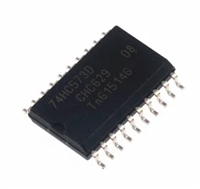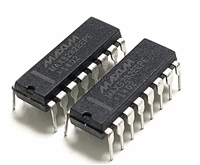NMOS linear image sensor S3922/S3923 series
Terminal
φ1, φ2
Input or output
Input
(CMOS logic compatible)
Description
Pulses for operating the MOS shift register. The video data rate is equal to
the clock pulse frequency since the video output signal is obtained
synchronously with the rise of φ2 pulse.
Pulse for starting the MOS shift register operation. The time interval between
Input
(CMOS logic compatible) start pulses is equal to the signal accumulation time.
φst
Vss
Vscg
-
Connected to the anode of each photodiode. This should be grounded.
Used for restricting blooming. This should be grounded.
Input
Input
(CMOS logic compatible)
Reset φ
With Reset φ at high level, the video line is reset at the Reset V voltage.
The Reset V terminal connects to each photodiode cathode via the video
line when the address turns on. A positive voltage should be applied to the
Reset V terminal to use each photodiode at a reverse bias. Setting the
Reset V voltage to 2.5 V is recommended when the amplitude of φ1, φ2 and
Reset φ is 5 V. Terminal pin 7 is used for both Reset V and Vscd.
Used for restricting blooming. This should be biased at a voltage equal to
Reset V.
Reset V
Input
Vscd
Input
Low-impedance video output signal after internal current-voltage conversion.
Negative-going output including DC offset.
Active video
Output
This has the same structure as the active video, but is not connected to
photodiodes, so only DC offset is output. Leave this terminal open when not
used.
Dummy video
Output
Vsub
Vdd
-
Connected to the silicon substrate. This should be grounded.
Supply voltage to the internal impedance conversion circuit. A voltage equal
to the amplitude of each clock should be applied to this terminal.
This should be pulled up at 5 V by using a 10 kΩ resistor. This is a negative
going pulse that appears synchronously with the φ2 timing right after the last
photodiode is addressed.
Input
Output
(CMOS logic compatible)
End of scan
NC
-
Should be grounded.
Figure5 Spectralresponse(typicalexample)
Figure 6 Output voltage vs. exposure
(Typ. Reset V=2.5 V, Vdd=5.0 V, V =5.0 V, light source: 2856 K)
(Typ. Reset V=2.5 V, Vdd=5.0 V, V =5.0 V, light source: 2856 K)
SATURATION OUTPUT VOLTAGE
(Ta=25 ˚C)
101
101
100
0.3
SATURATION OUTPUT VOLTAGE
100
0.2
0.1
10-1
10-2
10-3
10-4
10-1
10-2
10-3
10-4
S3922-128Q
S3922-256Q
S3923-256Q
S3923-512Q
S3922-512Q
S3923-1024Q
SATURATION EXPOSURE
SATURATION EXPOSURE
0
100
200
10-5
10-4
10-3
EXPOSURE (lx · s)
10-2
10-1
100
400
800
WAVELENGTH (nm)
600
10-5
10-4
10-3
EXPOSURE (lx · s)
10-2
10-1
1200
1000
KMPDB0149EA
KMPDB0120EA
KMPDB0121EA
ꢀꢀConstruction of image sensor
The NMOS image sensor consists of a scanning circuit made
up of MOS transistors, a photodiode array, and a switching
transistor array that addresses each photodiode, all integrated
onto a monolithic silicon chip. Figure 1 shows the circuit of a
NMOS linear image sensor.
The MOS scanning circuit operates at low power consump-
tion and generates a scanning pulse train by using a start
pulse and 2-phase clock pulses in order to turn on each ad-
dress sequentially. Each address switch is comprised of an
NMOS transistor using the photodiode as the source, the
video line as the drain and the scanning pulse input section
as the gate.
The photodiode array operates in charge integration mode
so that the output is proportional to the amount of light expo-
sure (light intensity × integration time).
Each cell consists of an active photodiode and a dummy
diode, which are respectively connected to the active video
line and the dummy video line via a switching transistor. Each
of the active photodiodes is also connected to the saturation
control drain via the saturation control gate, so that the photo-
diode blooming can be suppressed by grounding the satura-
tion control gate. Applying a pulse signal to the saturation
control gate triggers all reset. (See “Auxiliary functions”.)






 深入解析AD7606高性能多通道模数转换器:资料手册参数分析
深入解析AD7606高性能多通道模数转换器:资料手册参数分析

 74HC573三态非易失锁存器(Latch)资料手册参数分析
74HC573三态非易失锁存器(Latch)资料手册参数分析

 MAX3232 RS-232电平转换器资料手册参数分析
MAX3232 RS-232电平转换器资料手册参数分析

 MAX485 RS-485/RS-422收发器资料手册参数分析
MAX485 RS-485/RS-422收发器资料手册参数分析
